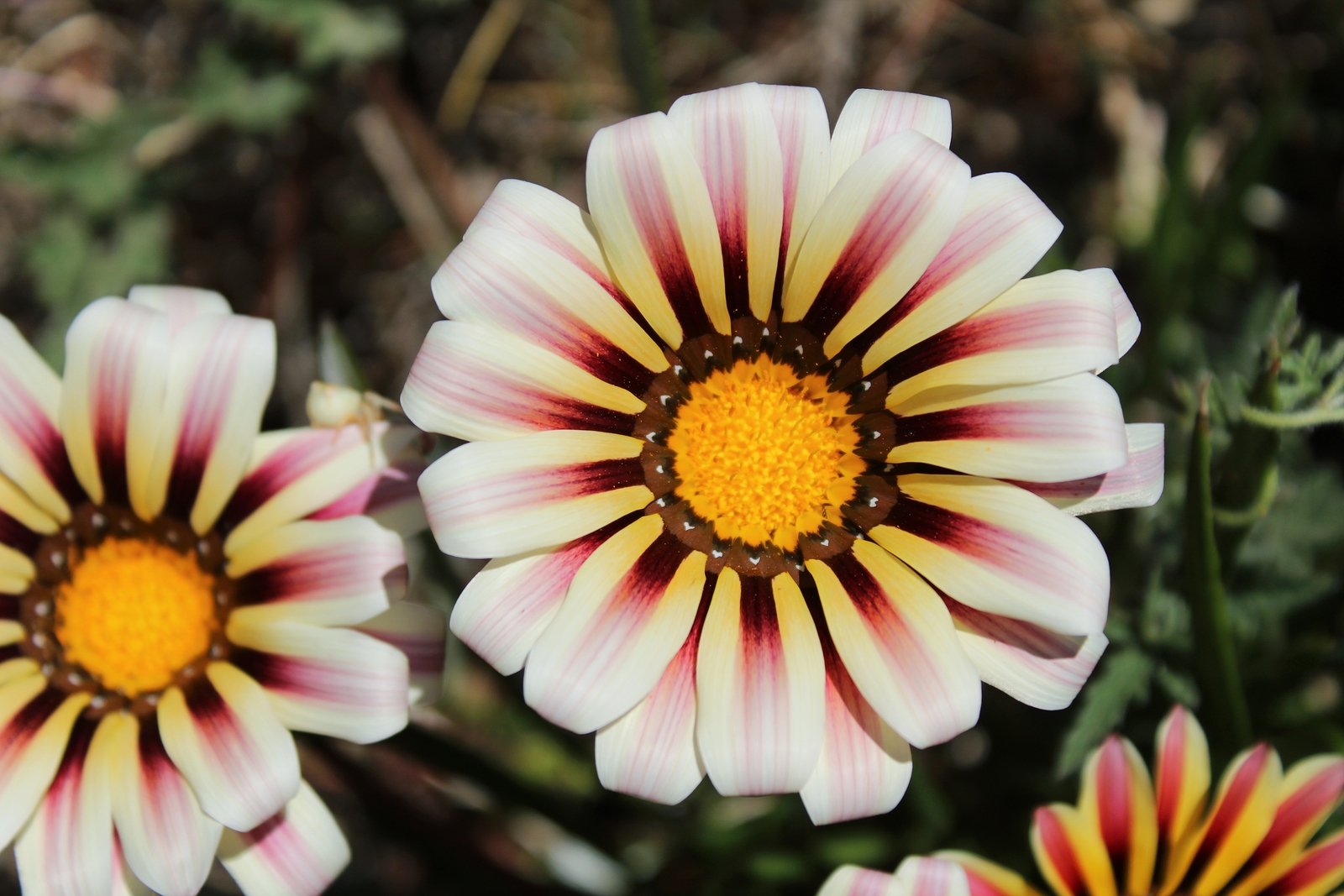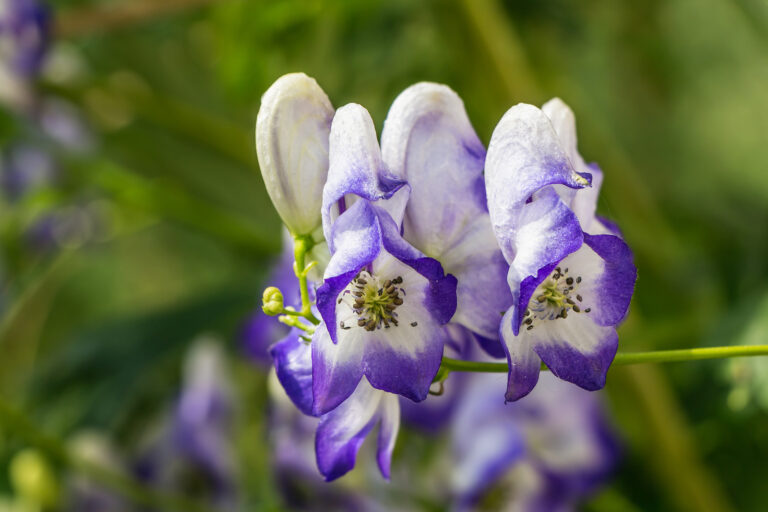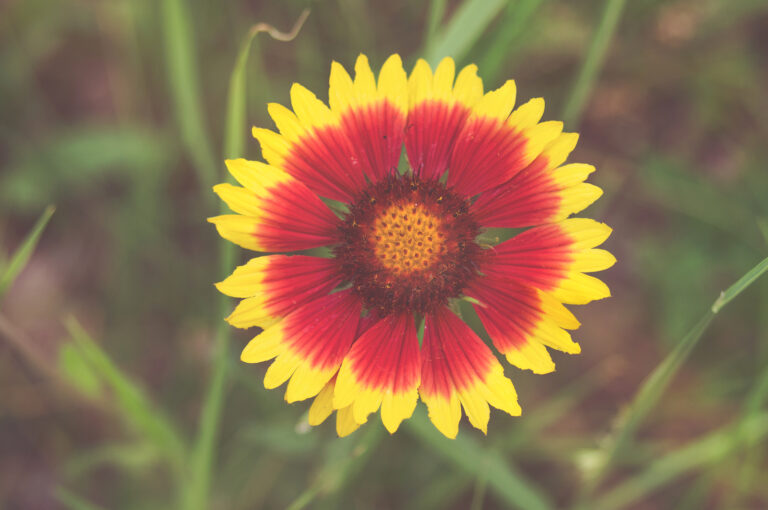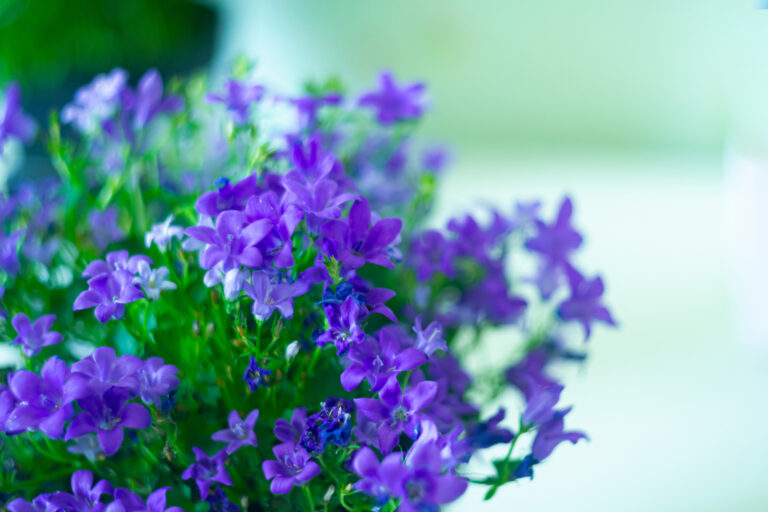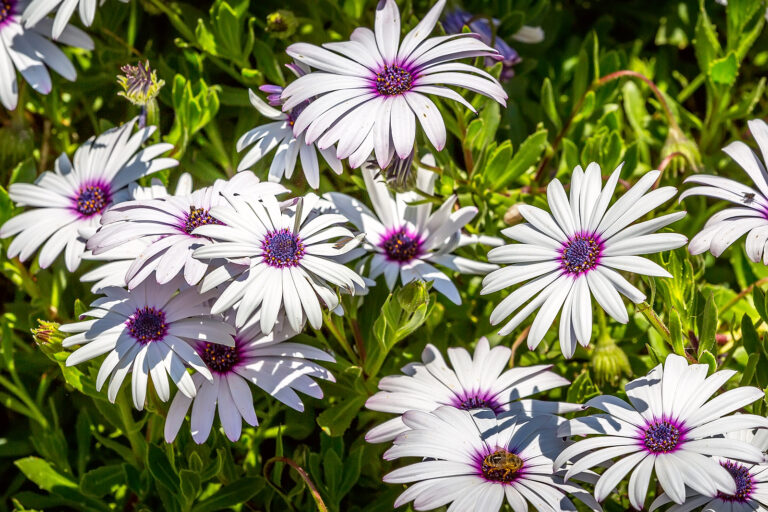How to Grow Treasure Flower — Gazania
Gazania, sometimes called treasure flower, is a perennial, sometimes treated as an annual. Gazanias are daisy-like flowers in pink, gold, bronze, or white with a yellow contrasting eye.
There are two basic types of Gazania: clumping and trailing (see below). Clumping gazanias can be used as temporary fillers between young growing shrubs and a replaceable ground cover. They are often used as edging along sunny paths, in rock gardens, and in parking strips. Trailing Gazanias can be used to hold the soil on banks, at the top of walls, and in hanging baskets.
Good Products for Growing Flowers at Amazon:
- Garden Safe Snail and Slug Bait
- Bonide Sulfur Fungicide
- Monterey BT Caterpillar Killer
- Neem Bliss 100-% Cold Pressed Neem Oil
- Safer Brand Insect Killing Soap
- PyGanic Botanical Insecticide
Flowerheads close in cloudy or cool weather. Gazania blooms through much of the summer.
There are 16 species of Gazania. Species include low-growing annuals and evergreen perennials.

Get to know Gazania
- Plant type: Annual or perennial
- Growing Zones and range: Annual in Zones 2-7; perennial in Zones 8-11.
- Hardiness: Hardy to 20°F (-7°C) ; thrives in heat; tolerates drought
- Height and width: 6 to 12 inches (15-30cm) tall; 6 to 10 inches (15-25cm)wide
- Foliage: Mostly lance-shaped basal leaves, sometimes lobed to 9 inches long covered with felted hairs on one surface or both.
- Flowers: Large daisy-like flowers up to 4 inches across; flowers close at night.
- Flower colors: Brightly colored in yellow, orange, red, or muted pink, often striped with dark centers; undersides of petals are purplish
- Bloom time: Summer through frost, all year in warmer climates
- Uses: Borders, beds, containers, edges, groundcover
- Common name: Gazania, treasure flower
- Botanical name: Gazania rigens
- Family: Asteraceae
- Origin: Tropical Africa
Where to plant Gazania
- Plant gazania in full sun in Zones 2-8; plant in sun or partial shade in Zones 9-11.
- Grow gazania in poor, sandy, or average, well-drained soil.
Gazania uses and companions
- In mild-winter regions, Gazania can be used as a ground cover.
- Mass Gazania together for a colorful presentation.
- Gazania is well-suited for desert gardens; Gazania grows best where summer temperatures are in the 80°sF and 90°sF(27°-32°C).
- Good garden companions for Gazania include Coreopsis, Iris, Linum. Lobelia laxiflora, Perovskia, Salvia, Sedum, Senecio.
When to plant Gazania
- Set gazania in the garden in spring after all danger of frost has passed.
- Sow seed in spring in warm soil.
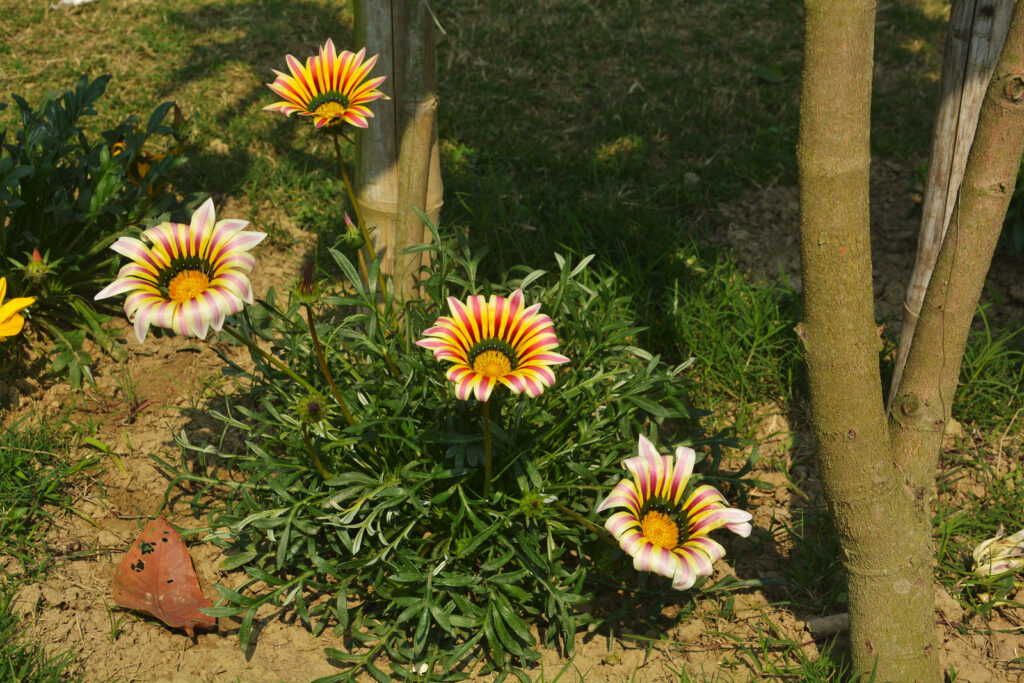
Planting and spacing Gazania
- Space gazania 12 inches (30cm) apart.
- Sow seed 1/8 inch deep.
How to water and feed Gazania
- Water gazania moderately; do not overwater.
- Fertilize gazania lightly if at all; use an all-purpose organic fertilizer.
Gazania care
- Trim spent gazania blooms to promote the longest blooming.
- Gazania will bloom year-round in warm-winter climates.
- Gazania is prone to crown rot in wet climates.
Growing Gazania as a houseplant
- Gazania should be grown where the temperature is cool to average, light is direct and humidity is average.
- Plant in a well-drained medium and allow the medium to dry out between waterings.
- Fertilize Ganzania monthly.
- Remove faded flowers to encourage new blooms.
Gazania pests and diseases
- Gazania is sometimes affected by powdery mildew, bacterial leaf spot, fungal spots, and crown rots.
- Gazania can be attacked by mealybugs.
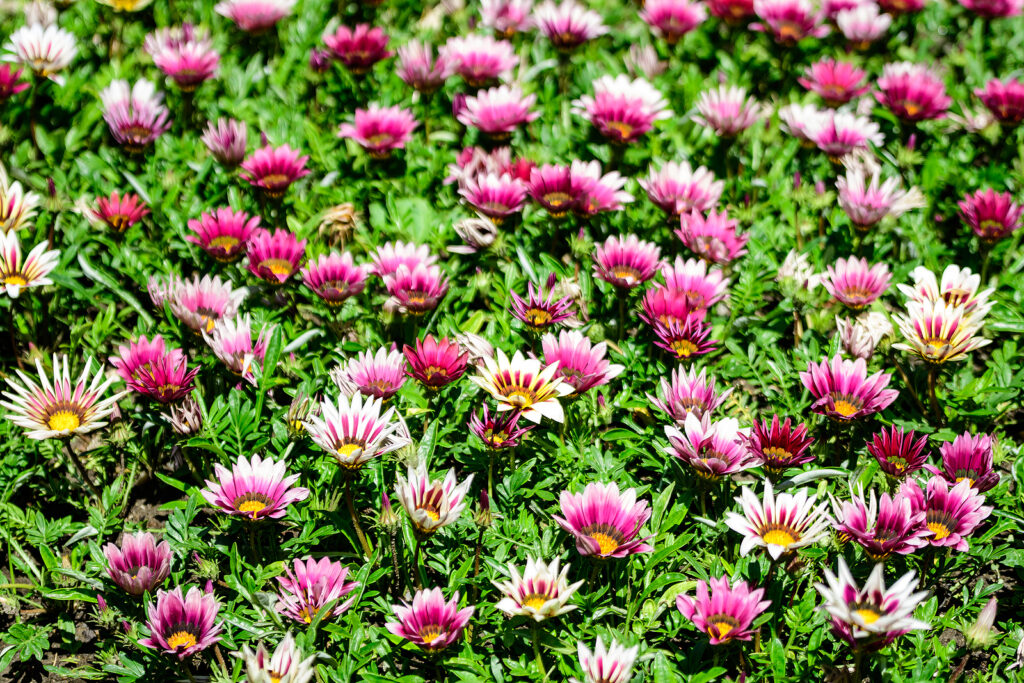
Gazania propagation
- Sow seed in warm soil in late winter or early spring.
- Gazania seeds germinate in 7 to 14 days at 64° to 68°F (18°-20°C); sow seeds in late winter or early spring. Cover the seeds lightly with soil then shade the pot or flat to exclude all light.
- Take basal cuttings in late summer or early autumn and grow on in a cold frame or greenhouse.
Gazania varieties to grow
There are two types of Gazania: rigens clumping and trailing. Both are represented by complex hybrids between a number of species.
- Clumping Gazanias form a mound of dark evergreen leaves; leaves are wooly underneath; flowers are 3 to 4 inches wide; cultivar series include Carnival (many colors; silver leaves), Chansonette (compact, early-blooming), Harlequin (many colors, eyed and banded). Mini-Star (compact), Sundance (striped or banded). Named hybrids include ‘Aztec Queen’ (multicolored), ‘Burgundy’, ‘Copper King’, ‘Fiesta Red’, ‘Moonglow’.
- Trailing Gazania spread rapidly by trailing stems; leaves are clean silvery gray, and flowers are yellow, white, orange, or bronze. Cultivars include: ‘Sunburst’ (orange with a black eye), ‘Sunglow’ (yellow), ‘Sunrise Yellow’ yellow with a large black eye.
Gazania frequently asked questions
Q: What growing conditions do Gazania like?
A: Gazania prefers high temperatures and dry soil. Plant it in full sun and light, sandy soil.
Q: Can Gazania be grown indoors?
A: Yes. You can pot up Gazania and grow it indoors in full sun. It will require little water.
Related Articles:

